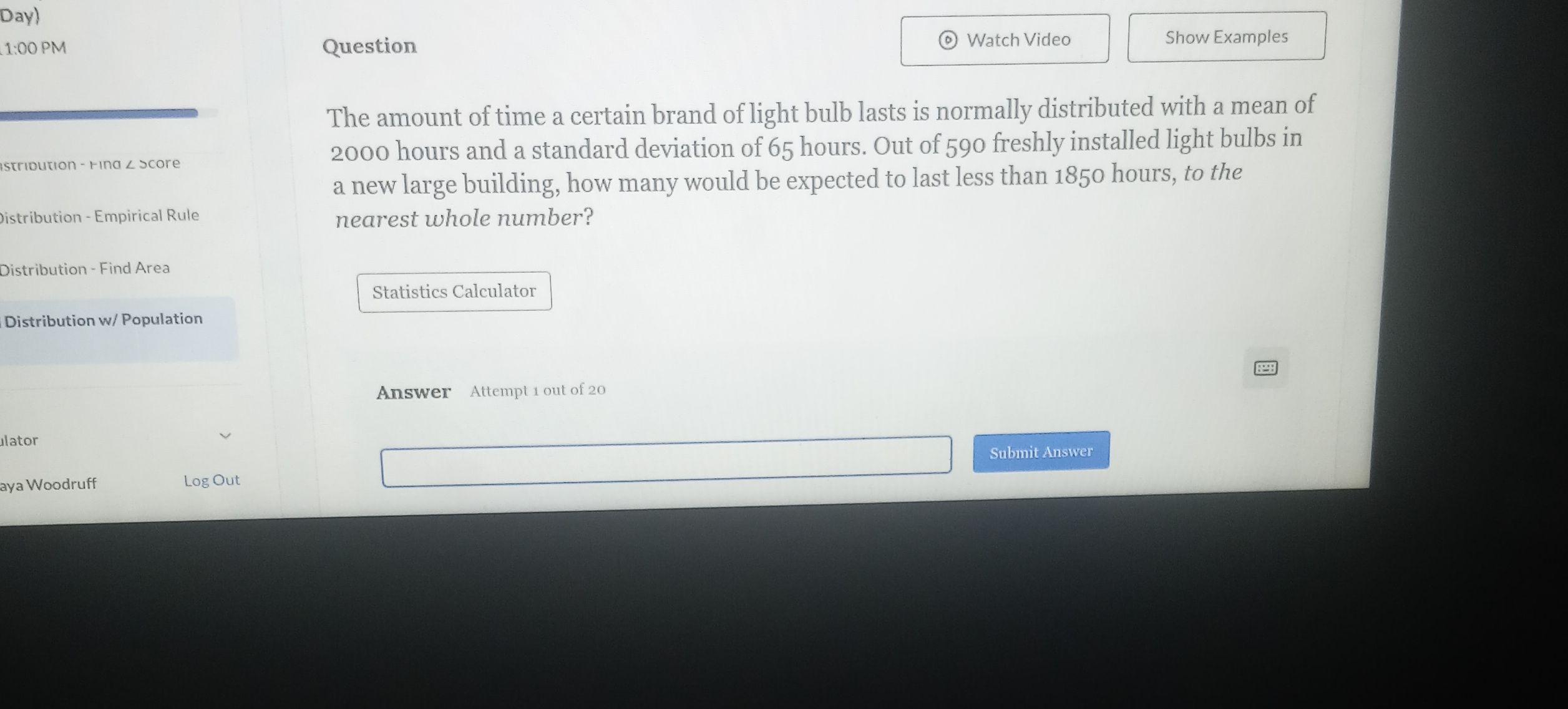AI tutor
Welcome to Bytelearn!
Let’s check out your problem:

The amount of time a certain brand of light bulb lasts is normally distributed with a mean of hours and a standard deviation of hours. Out of freshly installed light bulbs in a new large building, how many would be expected to last less than hours, to the nearest whole number?
Full solution
Q. The amount of time a certain brand of light bulb lasts is normally distributed with a mean of hours and a standard deviation of hours. Out of freshly installed light bulbs in a new large building, how many would be expected to last less than hours, to the nearest whole number?
- Calculate z-score: Calculate the z-score for hours using the formula , where is the value in question, is the mean, and is the standard deviation. hours, hours, hours.
- Lookup in table: Look up the z-score in a standard normal distribution table to find the probability that a light bulb will last less than hours.For , the probability (p-value) is approximately .
- Calculate expected number: Calculate the expected number of light bulbs that will last less than hours by multiplying the total number of light bulbs by the probability found from the z-score.Total number of light bulbs Expected number Expected number
- Round to nearest whole: Round the expected number to the nearest whole number since we cannot have a fraction of a light bulb.Expected number (to the nearest whole number)
More problems from Interpret confidence intervals for population means
QuestionGet tutor help
QuestionGet tutor help
QuestionGet tutor help
QuestionGet tutor help
QuestionGet tutor help
QuestionGet tutor help
QuestionGet tutor help
